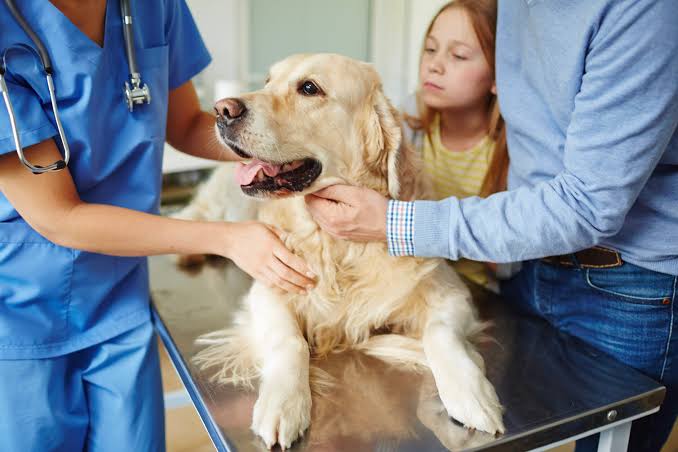Owning a pet is one of the most rewarding decisions you can make. The companionship, the loyalty, the emotional lift… it’s all real. But let’s be honest: pet ownership isn’t just cuddles and cute pictures. It’s a financial commitment that many people underestimate until the bills start showing up.
If you’ve ever heard someone say “pets aren’t that expensive,” chances are they haven’t had a surprise vet visit, a sudden behavior issue, or a senior pet needing long term care. The truth is, most of the real costs hide behind everyday moments. They’re not dramatic, just steady, and they accumulate.
So let’s walk through those hidden expenses in a way that keeps things friendly, honest, and easy to digest. By the end, you’ll know exactly where the real money goes and how to prepare for it.
Why People Underestimate Pet Costs
Before we even talk numbers, let’s check some assumptions that get people into trouble.
1. “Pets don’t need much.”
This is one of the biggest misconceptions. Low maintenance doesn’t mean zero maintenance. Even the “easiest” pets require consistent care, upgrades, grooming, and health checks.
2. “Food and vaccines are the only major expenses.”
If only it were that simple. Food and vaccines are the predictable part. Everything else is the plot twist.
3. “I’ll worry about emergencies when they happen.”
This is where pet owners get overwhelmed. Emergency bills don’t care about your budget or your paycheck cycle.
4. “My pet is small, so expenses will be small.”
A tiny rabbit can rack up bills. A small gecko needs environmental equipment. A kitten can destroy furniture. Size does not equal cost.
Now let’s dig into the real expenses people don’t see coming.
1. Veterinary Surprises and Medical Care
If there’s one area that shocks first time pet owners, it’s medical bills. Regular checkups are manageable. But unexpected issues? They hit hard.
Routine Care Adds Up
Even the basics cost more than people expect.
• Annual exams
• Vaccines
• Deworming
• Flea and tick prevention
• Dental cleanings
Dental care is a whole topic on its own. Many pets need a professional cleaning at least once a year, and that alone can cost more than people budget for.
Emergencies Are Expensive
A simple “my dog vomited all night” emergency can turn into:
• X rays
• Blood tests
• IV fluids
• Medications
• Overnight monitoring
One emergency visit can cost as much as three months of rent depending on where you live. Best case, you still walk away with a bill that stings.
Chronic Conditions
Aging pets or genetically sensitive breeds may develop long term issues like allergies, arthritis, diabetes, kidney disease, or heart conditions. These require:
• Monthly meds
• Frequent vet visits
• Specialized diets
• Sometimes hospitalization
These aren’t one time bills. They’re recurring.
Let me ask you something. Have you ever calculated what it might cost to support your pet if they needed medication for life? Most people don’t even think of that angle.
2. Grooming and Hygiene
Some pets need grooming as part of their health, not luxury.
Not All Coats Are Equal
Breeds with long or curly coats require:
• Regular trimming
• Brushing
• Nail care
• Ear cleaning
• De shedding
If you skip grooming, you’re not just saving money. You’re setting up your pet for skin infections, painful mats, and ear problems.
DIY Grooming Still Costs Money
Even if you groom at home, you’ll eventually invest in:
• Brushes
• Clippers
• Shampoo
• Nail trimmers
• Ear wipes
Some owners are surprised when grooming tools alone start to feel like a mini investment.
3. Food and Upgrades
Food isn’t just “buy one bag every month.” It changes as your pet grows, ages, or develops sensitivities.
Premium Food
Pets with sensitive stomachs, allergies, or weight issues may need:
• Grain free diets
• Prescription food
• Supplements
These are not cheap.
Treats and Snacks
You don’t feel these expenses until they pile up. A few treats here and there can quickly become a monthly cost if you’re not paying attention.
Bowls, Feeding Mats, and Storage
As your pet matures, you may need:
• Elevated bowls
• Slow feeders
• Airtight containers
• Puzzle feeders
• Litter box upgrades
Small purchases, but consistent ones.
4. Behavior and Training Costs
People massively underestimate how much behavior problems cost.
Training Isn’t Optional
If your dog starts pulling on the leash, barking excessively, or showing anxiety, you may need:
• Private training sessions
• Group classes
• Behavior modification tools
• Consultation with behaviorists
Training is cheaper when you address issues early. Waiting makes it far more expensive.
Behavior Issues Cause Damage
Scratched couches
Destroyed shoes
Chewed wires
Broken decor
Torn curtains
Replacing damaged items quietly drains your wallet.
5. Pet Boarding and Travel Costs
Unless you plan to stay home forever, someone will eventually need to watch your pet.
Boarding or Pet Sitting
Costs depend on:
• Pet type
• Location
• Duration
• Special needs
Even boarding cats can be pricey. Exotic pets? More complicated. Dogs? Even more.
Travel Accessories
If you travel with your pet, you may need:
• Carriers
• Crates
• Travel bowls
• Harnesses
• Airline fees
• Health certificates
That trip you planned suddenly has a few extra line items.
6. Pet Supplies and Replacement Costs
Toys wear out. Beds flatten. Litter boxes crack. Cages need upgrades.
Monthly or Seasonal Purchases
• Litter
• Bedding
• Chew toys
• Stimulation toys
• Cleaning supplies
• Collars and tags
Even healthy pets create ongoing maintenance costs.
7. Home Adjustments
Pets change how you maintain your home.
Cleaning Needs
You might end up buying:
• Vacuums specialized for pet hair
• Pet safe cleaners
• Odor removers
• Stain removers
This is especially true for shedding pets or young pets still learning boundaries.
Damage Repairs
Scratches on walls
Bite marks on furniture
Stains on carpets
Small but consistent fixes.
8. End of Life Care
No one likes to think about this, but it’s part of responsible ownership.
• Pain management
• Senior diets
• Special bedding
• Mobility tools
• Hospice care
• Euthanasia services
These costs hit emotionally and financially.
How to Prepare for the Hidden Costs
Let’s talk solutions. The goal isn’t to scare you. It’s to help you plan smartly so nothing catches you off guard.
1. Create a Pet Emergency Fund
Even N20,000 added consistently is better than nothing.
2. Compare Pet Insurance
Not every pet needs it, but it’s worth researching for breeds prone to medical issues.
3. Budget for Monthly Essentials
Food
Litter
Treats
Grooming
These should be predictable.
4. Plan for Yearly Medical Care
Vaccines
Dental cleaning
Checkups
5. Train Early
It’s cheaper to correct behaviour early than to fix damage later.
Final Thoughts
Pets aren’t cheap, and that’s okay. They’re family. The key is walking into pet ownership with your eyes open. The more prepared you are, the smoother the journey becomes and the less overwhelmed you’ll feel when surprises hit.
Let me push you a bit. When you think of pet ownership, which of these hidden costs do you think people still underestimate the most? And why do you think so many new owners assume pets are low budget when they really aren’t?
Happy to dive deeper if you want to explore specific pet types or cost ranges.



